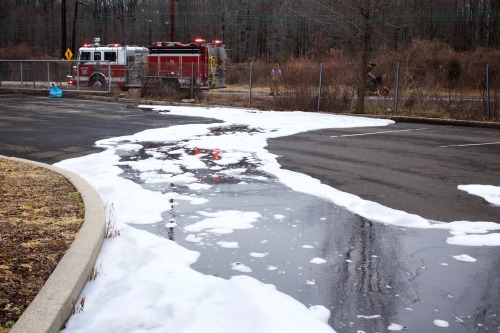
The $770 billion Fiscal Year 2022 National Defense Authorization Act (NDAA; S. 1605) was signed into law last week, and among its many provisions were funding for addressing both Per- and Polyfluoroalkyl Substances (PFAS) contamination throughout the United States.
This will take the form of new reviews and guidance to prevent and mitigate Aqueous Film Forming Foam (AFFF) spills at Department of Defense (DoD) operations and through agreements with non-DoD entities. AFFF is a fire suppression system used in many DoD missions. New guidelines will seek to mitigate the risk of equipment failure that could result in spills of AFFF and list out requirements for using personal protective equipment during material transfers or maintenance activities that could result in such spills.
Additionally, the Secretary of Defense will issue different guidances for both the DoD and non-DoD entities on how best to prevent and mitigate spills of AFFF itself, focusing on personnel supervision, proper containment, and storage of materials for cleanup. These guidelines will be developed based on the results of a comprehensive review and implemented no later than 90 days after their completion.
Following reviews, the secretary will brief Congressional Armed Services Committees with a summary of each within 30 days after each issued guidance. Along the way, they will also create a PFAS Task Force to identify and fund procurement of an effective alternative to PFAS firefighting foam and address its effects. Funding of a study and assessment on the health implications of PFAS contamination in drinking water will also be extended through 2023, while within two years, an assessment and site inspection testing for PFAS will have to be conducted at all National Guard facilities in the United States that have released PFAS.
Even removal of PFAS will be put under greater scrutiny. Henceforth, a 120-day moratorium is in place for PFAS and AFFF substances and will remain so until both the Secretary of Defense issues interim guidance on its destruction and disposal and the Environmental Protection Agency Administrator publishes a final rule regarding the same in the Federal Register.
Within a year of the bill’s enactment and then every year thereafter for three years, the Secretary of Defense shall have to submit a report on all PFAS incineration to both the EPA Administrator and the Congressional Armed Services Committees. An additional report on the results of DoD water testing will have to be publicly disclosed, while the Comptroller General separately initiates a study on DoD procurement of PFAS and items containing it. The latter will help determine the extent of PFAs substances in items procured by the DoD, the challenges to identifying this presence, and the extent to which the DoD has already examined its capability to prohibit the procurement of PFAS-contaminated items.
Further briefings will follow on the schedule of PFAS remediation. In all, more than $560 million will be issued for PFAS restoration, technical certification affiliated with it, and environmental research.




